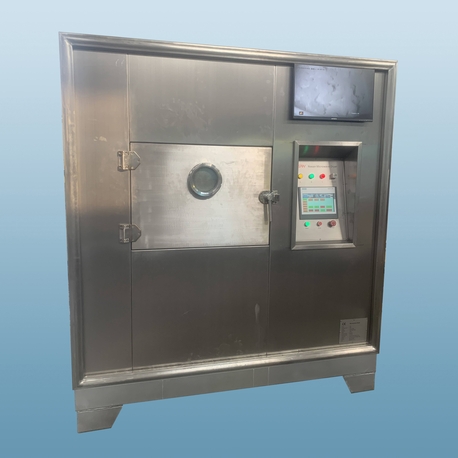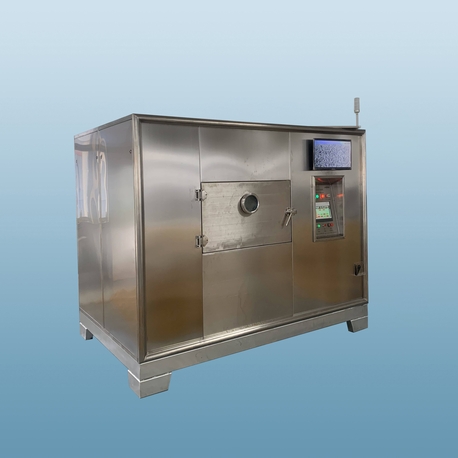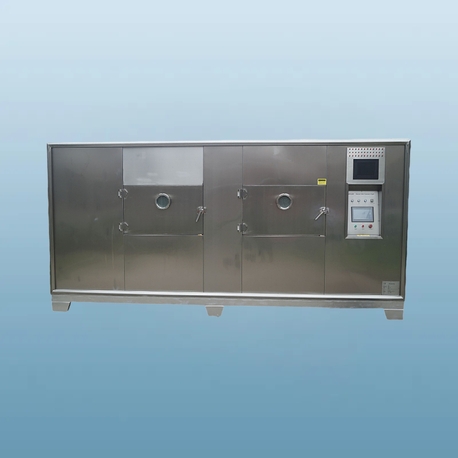In the world of industrial processing, efficiency and product quality are paramount. Whether you're dealing with pharmaceuticals, chemicals, or food products, removing moisture effectively is a critical step. While many drying technologies exist, one method stands out for its ability to handle heat-sensitive and high-value materials with exceptional care: the industrial vacuum dryer.
This deep-dive article explores the inner workings of vacuum dryers, their key advantages, and where they fit within the commercial and industrial landscape. We will also touch upon how manufacturers like Nasan have refined this technology to meet modern production demands.

Understanding the Core Principle: Why Use a Vacuum?
At its heart, a vacuum dryer is a sealed chamber where air and pressure are reduced. This simple-sounding change has profound effects on the drying process.
In a standard atmospheric dryer, heat is applied to evaporate moisture. However, as water turns to vapor, it increases the local humidity, slowing down further evaporation. High temperatures are often needed to drive the moisture out, which can damage sensitive materials.
A vacuum dryer circumvents this by lowering the pressure inside the chamber. When pressure drops, the boiling point of water also drops significantly. This means that water and solvents can evaporate at much lower temperatures—often as low as 30-60°C (86-140°F) instead of 100°C (212°F). The vacuum pump continuously removes the vapor, ensuring the chamber environment remains conducive to rapid evaporation without the need for excessive heat. This makes the vacuum drying process exceptionally gentle and efficient.
Key Advantages of the Vacuum Drying Process
Why would an industry choose a vacuum dryer over other types? The benefits are substantial:
Gentle Drying for Sensitive Materials: The low-temperature operation preserves the integrity of heat-sensitive products. This is crucial for pharmaceuticals (preserving API potency), certain chemicals, and food products (maintaining flavor, color, and nutritional value).
Prevention of Oxidation: By removing oxygen from the chamber, the vacuum dryer prevents oxidation reactions. This is vital for materials that can degrade, combust, or form explosive mixtures when exposed to air.
Higher Efficiency and Energy Savings: Although the system requires energy to create a vacuum, the overall process is often faster and uses less thermal energy than conventional methods, especially for materials that are difficult to dry.
Superior Final Product Quality: The controlled, gentle drying process results in a more consistent end product with fewer cracks, shrinks, or case-hardening (where the outside dries into a hard shell, trapping moisture inside).
Solvent Recovery: In processes where solvents other than water are used, a vacuum dryer can be equipped with a condenser to capture these solvents for reuse or safe disposal, adding an economic and environmental benefit.
Common Types of Industrial Vacuum Dryers
The term "vacuum dryer" encompasses several designs, each suited to different material characteristics.
Vacuum Shelf Dryers: These are the most common type, featuring hollow shelves within the vacuum chamber. A thermal fluid circulates through these shelves, providing indirect conductive heat to trays holding the product. They are ideal for batch processing of powders, granules, and pastes.
Vacuum Rotary Dryers: This design features a horizontal jacketed cylinder that rotates, tumbling the product for uniform drying. The rotation provides a mixing action, making it excellent for free-flowing powders and crystals that need consistent heat exposure.
Vacuum Double-Cone Dryers: A popular variant of the rotary dryer, it consists of two cones joined at the base. The tumbling action in this geometry is very efficient for blending and drying simultaneously, minimizing product breakage.

Major Industrial Applications of Vacuum Dryers
The unique capabilities of the vacuum drying machine make it indispensable across several high-stakes industries.
Pharmaceutical Industry: Used for drying active pharmaceutical ingredients (APIs), antibiotics, and other intermediates where purity and stability are non-negotiable.
Chemical Industry: Essential for drying catalysts, pigments, polymers, and other specialty chemicals that are heat-sensitive or reactive.
Food & Biotechnology: Employed for drying delicate foodstuffs like probiotics, enzymes, vitamins, and certain fruit extracts without destroying their nutritional profile.
Advanced Materials & Ceramics: Used in the production of battery materials, where precise moisture control is critical for performance and safety.
Selecting the Right Vacuum Dryer: A Brief Guide
Choosing the correct industrial vacuum dryer requires careful consideration:
Material Characteristics: Is your product heat-sensitive, flammable, or easily oxidized? A vacuum dryer is likely the answer.
Batch vs. Continuous Processing: Most vacuum dryers are batch systems, suitable for high-value, multi-purpose production lines.
Moisture Content: Determine the initial and required final moisture content. The efficiency of a vacuum dryer is particularly notable when removing trace amounts of moisture.
Construction Materials: The dryer must be constructed of materials compatible with your product, often stainless steel (304 or 316L) for corrosion resistance and easy cleaning.
Manufacturers who understand these nuances, like Nasan, offer a range of vacuum drying solutions designed with these industrial challenges in mind, ensuring reliability and compliance with strict industry standards.
Maintenance and Safety Best Practices
To ensure longevity and safe operation of your vacuum dryer, follow these guidelines:
Regular Seal Inspection: The integrity of the vacuum chamber door seal is critical. Inspect it regularly for wear and tear.
Vacuum Pump Maintenance: The pump is the heart of the system. Regular oil changes (for oil-sealed pumps) and servicing are mandatory.
Cleanliness: Implement a strict cleaning protocol between batches to prevent cross-contamination, especially in pharmaceutical and food applications.
Safety Interlocks: Ensure all safety systems, particularly those related to pressure and temperature, are functional before each operation.
The industrial vacuum dryer is more than just a piece of equipment; it is a precision tool that enables the production of high-value, sensitive materials that would be impossible to create with conventional drying methods. Its ability to combine low-temperature drying with an oxygen-free environment makes it a cornerstone of modern manufacturing in sectors where quality, safety, and efficiency are the top priorities.
When investing in such critical technology, partnering with an experienced manufacturer is key. With a focus on robust engineering and process understanding, companies like Nasan provide vacuum drying systems that deliver consistent performance, helping businesses protect their products and optimize their operations for years to come.
Frequently Asked Questions (FAQs) About Vacuum Dryers
Q1: What is the main difference between a vacuum dryer and a standard oven dryer?
A1: The core difference lies in the operating environment. A standard oven dryer operates at atmospheric pressure and relies on high temperatures to evaporate moisture. A vacuum dryer reduces the chamber pressure, which lowers the boiling point of liquids, allowing for effective drying at much lower temperatures. This makes it ideal for heat-sensitive materials.
Q2: Can a vacuum dryer handle wet, slurried materials, or is it only for powders?
A2: While excellent for powders and cakes, many vacuum dryers, particularly vacuum shelf dryers, can indeed handle slurries and pastes. They are often loaded into trays for processing. However, for very sticky or sludgy materials, a paddle dryer or other agitated design might be more suitable to ensure even heat transfer.
Q3: How long does a typical vacuum drying cycle take?
A3: There is no single answer, as the cycle time depends on the material's properties, the initial moisture content, the desired final moisture, the heat source temperature, and the vacuum level. Cycles can range from a few hours to over 24 hours. A manufacturer like Nasan can often provide lab-scale testing to determine accurate cycle times for your specific product.
Q4: Is it possible to recover solvents evaporated during the vacuum drying process?
A4: Yes, this is a significant advantage. By installing a condenser (often called a vapor condenser) between the vacuum dryer and the vacuum pump, the evaporated solvents can be cooled and condensed back into liquid form. This allows for solvent recovery, which reduces waste, lowers costs, and minimizes environmental impact.
Q5: What are the most critical maintenance tasks for an industrial vacuum dryer?
A5: The three most critical maintenance areas are: 1) The Vacuum Pump: Regular oil changes and filter replacements are essential for maintaining pump performance and ultimate vacuum level. 2) The Door Seals: Regularly inspecting and replacing the elastomer seals ensures the chamber maintains its vacuum integrity. 3) The Heating System: Checking for leaks in thermal oil systems or maintaining electrical elements in jacket heaters is vital for consistent and safe operation.









